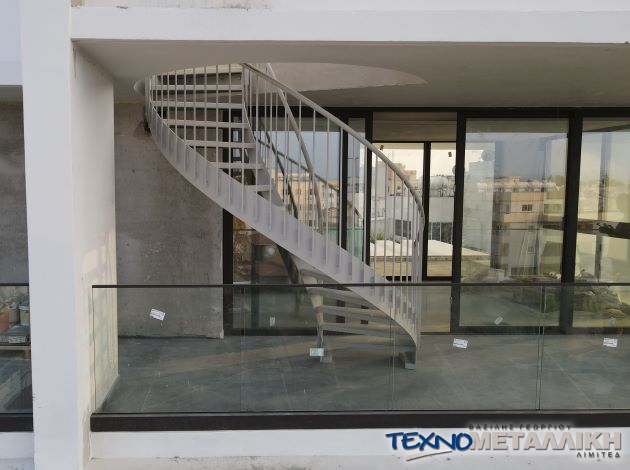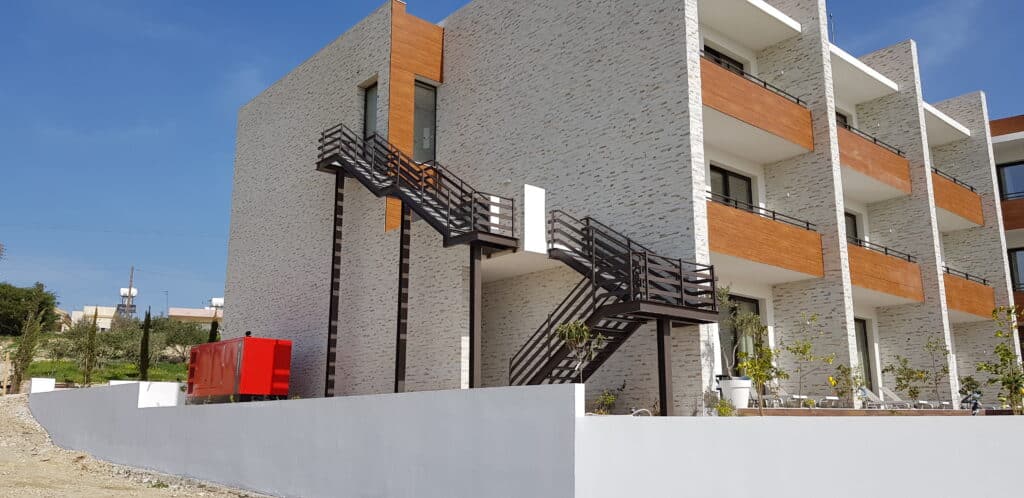Small footprints demand clever stairs. Metal helps because it carries loads with slim parts, accepts precise fabrication, and fits many layouts. The right choice will guide movement, save space, and set the tone of a room. This guide explains the main types that work in tight spaces, then maps them to real needs so you can brief a fabricator with confidence.
The four contenders
Spiral. A central staircase installations Cyprus column supports wedge-shaped treads that wind in a full circle. The footprint is a neat disc, so it suits lofts and mezzanines. Spirals save space, but the tread shape narrows towards the column. That makes descents slower and carrying bulky items awkward. You gain comfort by choosing a larger diameter and a continuous handrail on both sides.
Helical. Helical stairs curve gracefully without a central post. They often sit within an oval footprint and feel smoother to climb than a spiral. Fabrication is more complex because the stringers and balustrade follow a precise curve. You get better step width through the turn and a striking feature, but you give up a little floor area compared to a compact spiral.
Floating. Floating metal staircases use a single stringer, twin stringers, or cantilevered treads from a wall. Open risers and slender steel members make the run feel light. The plan length is similar to a straight stair, yet the open structure keeps sightlines and daylight. You will need solid fixing points and careful detailing to control vibration and meet safety rules on riser gaps.
Straight. The simplest route from A to B. Straight stairs are easy to read, quick to climb, and best for moving furniture. They ask for the longest run, which can be hard in a tight home. A switchback with a small landing can solve that, though it needs a touch more width than a spiral.
How to match stair type to space
Footprint and circulation. Spirals win on pure compactness. Helicals need more room but still trim compared with wide straight flights. Straight or floating runs ask for plan length, which you might find along a wall or over a doorway. Sketch the available circle, oval, or corridor and measure clearances to doors and windows.
Users and comfort. Will the stair serve daily family use? If yes, prioritise generous going at the line of travel and a steady handrail. Spirals suit occasional access to a roof terrace or loft. Helicals and straight runs suit frequent trips with bags or laundry. If young children or older adults will use it, choose the type with the most even steps and the least twist.
Things you carry. Do you often move boxes or a vacuum? Then a straight or helical stair helps. A compact spiral resists large items and can block two-way traffic. A floating stair with closed risers and a central stringer gives both clarity and carrying space.
Headroom and structure. Tight shafts can pinch headroom near landings and turns. Model the line of travel and check the void above it. Metal stairs feel solid only when fixings and stringers limit bounce. Floating and cantilevered designs need a stiff wall, steel plate connections, or embedded brackets planned before finishes go on.
Light and acoustics. Floating stairs let light pass and keep small rooms open. Glass or perforated steel balustrades support that effect. Solid metal plates can ring underfoot, so consider anti-drum measures, rubber isolators, or timber tread caps for a warmer sound and feel.
Compliance. Rules on rise, going, handrails, guarding, and openings vary by country. Check local building control early and share the limits with your fabricator. This avoids redesign later and keeps approvals smooth.
Materials and finishes that suit small spaces
Mild steel offers strength, crisp edges, and good value. Powder coating gives durable colour with minimal upkeep. Stainless steel works for coastal or humid areas; grade choice depends on exposure. Aluminium cuts weight and helps where fixings sit on weaker substrates, though members may need larger sections. For treads, options include chequer plate for grip, open grating for drainage, or timber overlays for warmth. Outdoors, galvanised steel resists corrosion; indoors, fine polyester powder coats read cleaner and are easier to keep.
Balustrades shape both safety and style. Slim steel bars protect without feeling heavy. Perforated panels strike a balance between openness and privacy. Glass keeps everything light but raises cost and cleaning time. Cable infill looks minimal yet needs tension checks over time.
Budget and programme
Straight stairs are usually the least complex to make. Spirals sit in the middle. Helicals often land at the top end because curved stringers and railings call for advanced tooling and careful finishing. Prefabricated modular spirals offer speed and price certainty, while bespoke work matches exact openings and finishes. Lead times depend on survey, design, shop drawings, and coatings. Agree survey dates early and confirm access for delivery, lifting, and protection during fit-out.
Safety details that matter
Good staircases Cyprus rely on small decisions. Add a continuous handrail that returns to the wall to avoid catches. Use nosings that improve grip and visibility. Keep consistent rises and goings to build rhythm. Limit gaps in risers and guarding in line with local rules. Where stairs sit between two rooms, plan for smoke separation and fire strategy, then select materials and closures that support it.
Quick comparison
| Type | Footprint in plan | Walking comfort | Carrying items | Visual impact | Typical cost band |
| Spiral | Very compact | Moderate | Poor | Bold feature | Medium |
| Helical | Compact to medium | Good | Good | Statement | High |
| Floating | Linear | Good | Good | Light, open | Medium to high |
| Straight | Linear | Excellent | Excellent | Discreet | Low to medium |
A simple decision path
Start with the plan. If only a circle fits, pick a spiral and size it as generously as space allows. If an oval or L-shape works, consider a helical or a switchback straight stair. If you want openness against a wall, choose a floating run with a robust stringer. Next, match treads and balustrades to use and cleaning habits. Then align finish and maintenance with the environment. Need a metal staircase for a tight space in Cyprus? Technometalliki designs, fabricates, and installs custom metal stairs that respect both plan and people. The right staircase brings order, light, and safe movement to small places. Pick the form that fits your plan, favour comfort where use is frequent, and resolve structure early. Share drawings and regulations with your fabricator, ask for samples of coatings and treads, and confirm the installation route. With those steps in hand, your compact metal stair will look clear, feel secure, and work well for years.


